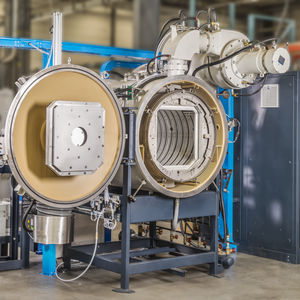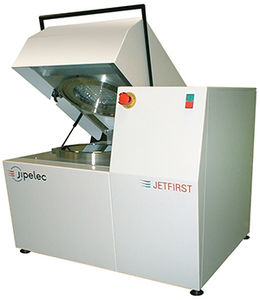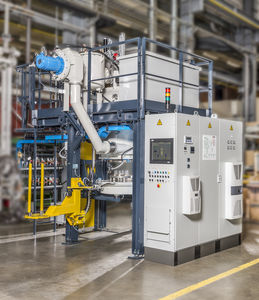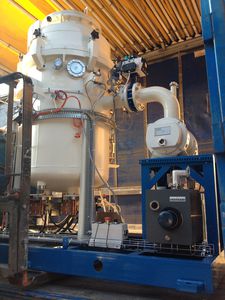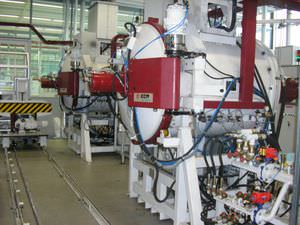
- Metrology - Laboratory
- Laboratory Equipment
- Annealing oven
- ECM Technologies
- Company
- Products
- Catalogs
- News & Trends
- Exhibitions
Annealing furnace Lilliputtemperingsinteringbrazing

Add to favorites
Compare this product
Characteristics
- Function
- annealing, sintering, tempering, brazing
- Configuration
- car bottom
- Heat source
- electric resistance
- Atmosphere
- vacuum, controlled atmosphere, inert gas, hydrogen, forced convection
- Other characteristics
- programmable, automatic, high-temperature, vertical, for steel, compact, for copper, graphite, large-size, for the electronics industry, for micromechanic, environmentally friendly, laboratory, industrial, for metallurgy, for aeronautical applications, for the ceramics industry
- Maximum temperature
1,600 °C, 2,350 °C
(2,912 °F, 4,262 °F)- Capacity
75 l
(19.81 gal)
Description
Lilliput furnaces take over the characteristics of most ECM furnaces but adapt them to the numerous conditions of laboratory experiments. They allow high added value applications while conserving very compact dimensions. These furnaces are particularly adapted to laboratory uses as well as university and R&D applications.
PLUS AND BENEFITS
Hearth lift furnaces have the advantage of being able to manipulate and gear up the load directly on the lift. For increased flexibility, it is possible to choose the nature of heating elements according to usage, performance and materials to be treated.
* Molybdenum up to 1600°C
* Tungsten up to 2350°C
Sold as standard with a primary vacuum configuration, the Lilliput range is easily convertible into an installation under secondary vacuum.
These furnaces are proposed with industrial control systems (Supervision) allowing the management and access to all the functions and programs of the furnace, as well as to the collection of all the data linked to the process.
POSSIBLE APPLICATIONS
• - Brazing
• - Glass to metal sealing
• - Annealing
• - Magnetic annealing
• - Sintering
• - Degassing
OPTIONS
• - Secondary vacuum
• - Accelerated cooling via forced convection
• - Gas humidification system
• - Uniaxial or isostatic press
• - Temperature up to 2800°C
• - Hyper quench
• - Use of special gas: hydrogen and other reactive gas
• - Partial pressure of neutral gas or reductive gas
Catalogs
File Vacuum furnace
2 Pages
Related Searches
- ECM oven
- ECM chamber oven
- ECM electric oven
- ECM heat treatment oven
- ECM laboratory oven
- ECM controlled atmosphere oven
- ECM high-temperature oven
- ECM industrial oven
- ECM vacuum oven
- ECM automatic oven
- Forced convection furnace
- ECM annealing oven
- Air circulating furnace
- Melting furnace
- ECM programmable oven
- Horizontal furnace
- ECM sintering oven
- Vertical furnace
- ECM compact oven
- Tempering furnace
*Prices are pre-tax. They exclude delivery charges and customs duties and do not include additional charges for installation or activation options. Prices are indicative only and may vary by country, with changes to the cost of raw materials and exchange rates.




